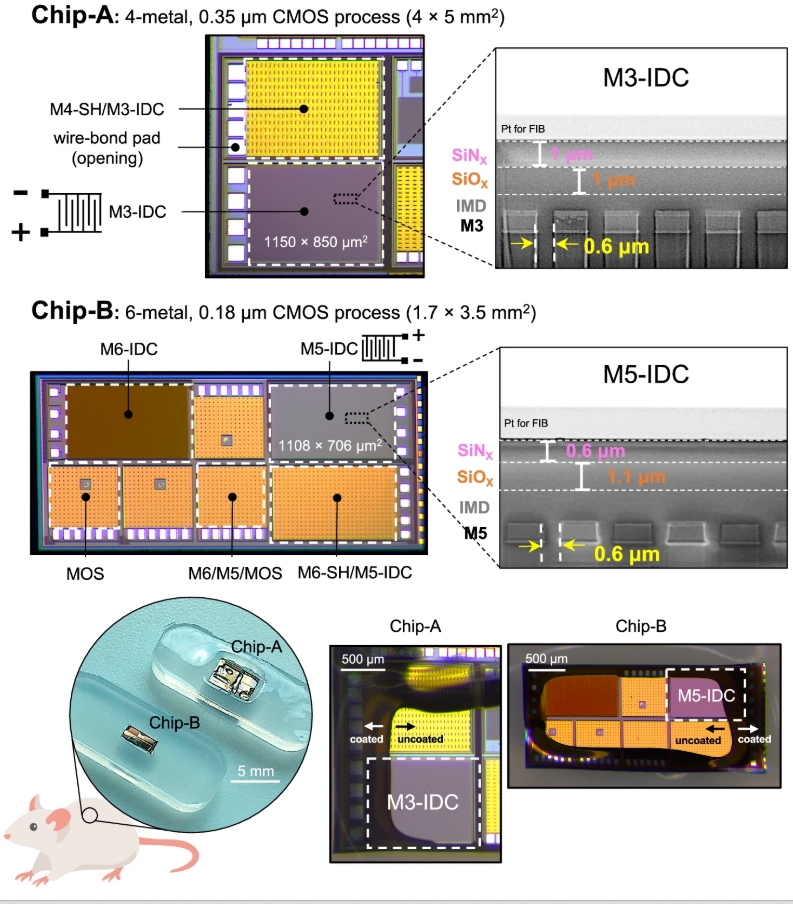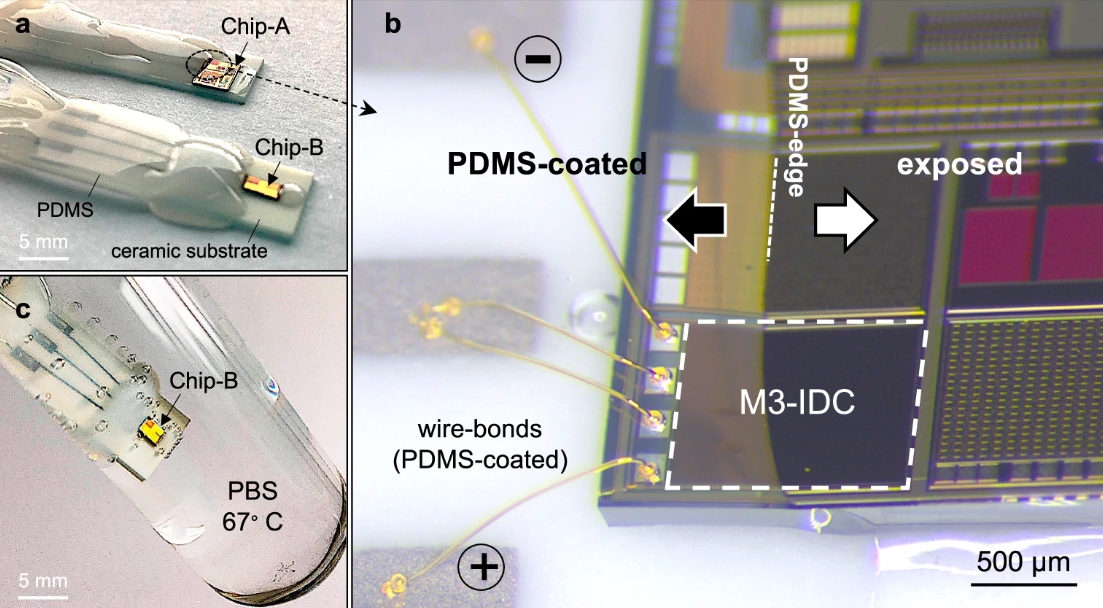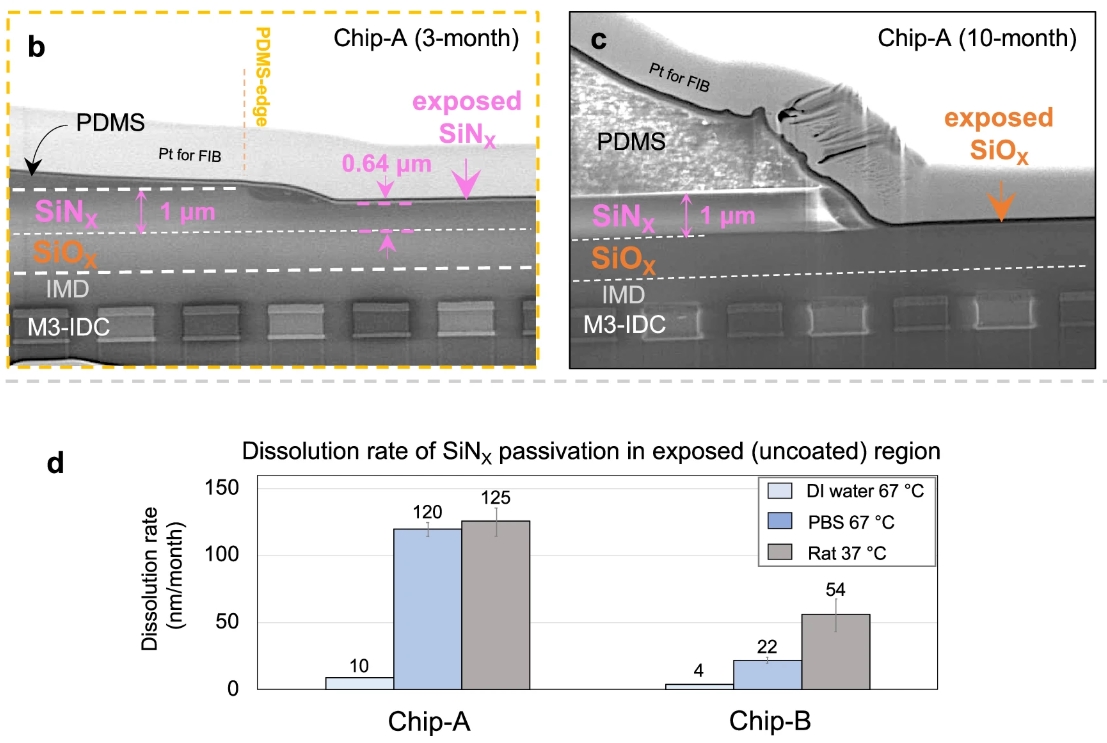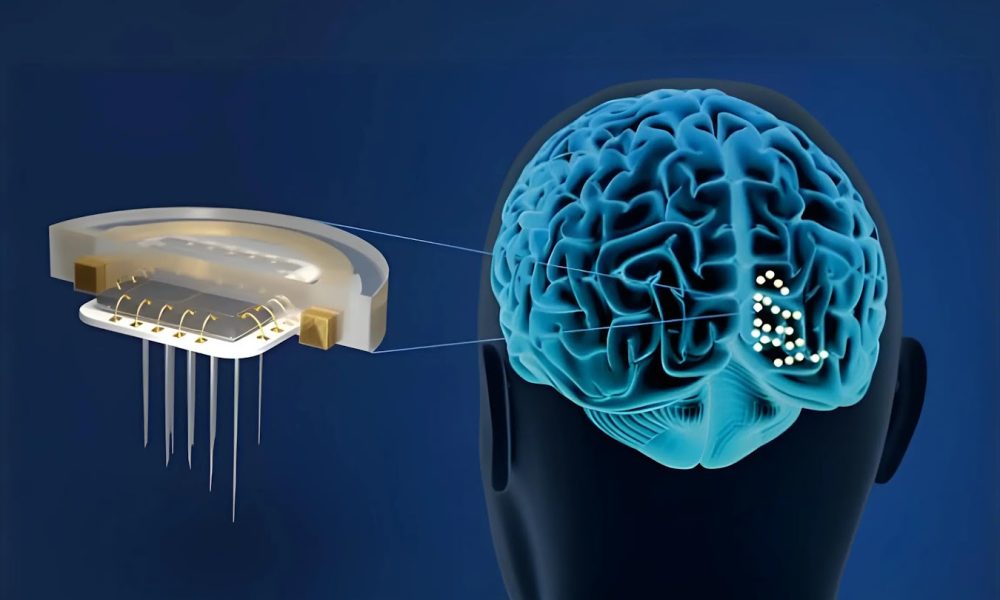Adapting Electronics To Our Brain
Over time, electronic devices have progressively become smaller and more omnipresent in our lives, from the early mainframe computer, which took up an entire room, to today’s smartphones and various smart devices.
The interface for controlling these devices has also evolved from punched cards to touch screens or even voice commands.
This still leaves another step for better control and interface between us and our computer: directly controlling it with our mind.
Such neural implants were for a long time a concept limited to science fiction. But they are soon becoming a reality. It is likely that the first applications will be medical, for monitoring or helping in case of diseases affecting the brain. But in the long run, the progress made in monitoring our brains’ activity could directly convert into the full integration of our thoughts into the control of our computer.
And maybe even later down the road, a seamless integration of the two, with the equally exciting and scary possibility to “download” data directly in our brain like in the Matrix movies.
Soft Brain Implant
One of the difficulty in implanting any artificial items in the body is to have it not damage the surrounding tissues. For some medical implants like bone implants, biocompatible metals like titanium can be used. But for softer tissues like the brain, flexible soft implants are a must, something hardly compatible with traditional electronics.
In addition, traditional electronics can themselves be damaged by the body’s fluids and ions.
So, if both the electronic components and the organs interfacing with them need to be protected from each other, an alternative strategy is likely needed.
“Advanced electronics have been in development for several decades now, so there is a large repository of available circuit designs.
The problem is that most of these transistor and amplifier technologies are not compatible with our physiology.”
Dion Khodagholy, Professor in UC Irvine’s Department of Electrical Engineering and Computer Science.
This why researchers at the University of California, Colombia University are investigating soft organic electrochemical transistors for potential brain implant design. They published their results in Nature Communication, under the title “Spatial control of doping in conducting polymers enables complementary, conformable, implantable internal ion-gated organic electrochemical transistors”1.
Polymer Electronics
To replace the hard silicon transistor, they used polymer-based electronics. And they went a step further than the previous attempts to make bioelectronics.
In previous iterations of this technology, the transistors were made of several different materials. This made them too bulky, as well as increasing the risk of toxicity, a problem especially acute for interactions with sensitive organs like the brain.
Instead, they manage to use a single, biocompatible material, poly(3,4-ethylenedioxythiophene) polystyrene sulfonate (PEDOT:PSS).
“By designing devices with asymmetrical contacts, we can control the doping location in the channel and switch the focus from negative potential to positive potential. This design approach allows us to make a complementary device using a single material.”
Duncan Wisniewski, Columbia University Ph.D. candidate.
The use of a single-polymer material also simplified the manufacturing process, making it more likely to be a commercially viable design, fit for mass production.
Source: Nature
Lastly, the extreme flexibility of the device allows it to move with the body and even still conform to organ structures as they grow. This can make an enormous difference for any pediatric applications, as children will need the implant to adapt to them over time.
Ions Instead Of Electrons
Another advantage of this approach is that the electronic use signals from ions of the body, instead of electric current. This is important as ion flux is how our cell signal information, even for neurons where the electric discharge at synapses is the result of a change in ion concentration.
“For our innovation, we used organic polymer materials that are inherently closer to us biologically, and we designed it to interact with ions, because the language of the brain and body is ionic, not electronic.”
Duncan Wisniewski, Columbia University Ph.D. candidate.
The implants were able to detect the activity of single neurons, a must-have for any future neural implant technology.
The stability and reliability of the implants were tested on live and freely moving rodents. The lightweight nature of the implants could be a revolution in the study of the brains of young mice, as they are too small to be measured with the traditional heavier and bigger implants.

Source: Nature
More Durable Implants
While flexible and precise electronics and sensors will be necessary for any neural implants, durability is another issue.
As we hardly want to regularly re-open the skull to change the implant, any electronic used needs to be ultra-durable and reliable.
It is also likely that any implants will still require some form of silicon electronics for performing calculations, even if these parts do not directly interact with the brain. So making silicon electronics able to survive the brain environment is a required step as well.
“Miniaturized neural implants have enormous potential to transform healthcare, but their long-term stability in the body is a major concern.”
Dr. Vasiliki (Vasso) Giagka, Associate Professor at the Delft University of Technology
Researchers at the Delft University of Technology (Netherlands), University College London, Imperial College London, and HUN-REN (Hungary) have worked on this topic. They published their discovery in Nature Communications under the title “On the longevity and inherent hermeticity of silicon-ICs: evaluation of bare-die and PDMS-coated ICs after accelerated aging and implantation studies”2.
Protecting Chips From The Brain
The researchers started by studying the degradation process of silicon-based electronics when implanted in brains. The tests were performed in both in-vivo and in simulation of in-vivo conditions in labs.
They tested chips from 2 different manufacturers, each using a different manufacturing process to make the chip, allowing for the results to be more easily expanded to any silicon electronic designs.

Source: Nature
Transistors, the computing components of chips, are protected by a thin layer of silicon oxide and silicon nitride around 200–300 µm (micometers) thick. The stability of this protection layer mostly determines the durability of the chip when implanted.

Source: Nature
Then the researchers looked into using polydimethylsiloxane (PDMS, silicone rubber) as a soft but moisture-permeable coating to extend the longevity of implantable electronics. Parts of the chips were coated in PDMS, the rest left exposed, in order to observe the difference in degradation.

Source: Nature
Radical Improvement In Durability
When exposed to a damaging environment, either in a lab or in rats, the PDMS layer provided a very durable protection to the silicon substrate. In contrast, a quick erosion of the silicon oxide and nitride occurred in mere months when exposed, with total loss of the protective layer after 10 months.

Source: Nature
“Our findings demonstrate that bare-die silicon chips, when carefully designed, can operate reliably in the body for months.
We were all surprised. I did not expect microchips to be so stable when soaked and electrically biased in hot salt water.”
Kambiz Nanbakhsh, PhD student
It should also be noted that the “Chip A” eroded a lot quicker than “Chip B”, so the design of a silicon chip can severely affect how durable it will be in neural implant applications.
Slightly higher hydrogen (H) content in Chip A could explain this difference, as well as maybe morphology (atomic arrangements) playing a role in the chemical stability when exposed to wet environments.
Applications
The combination of silicon chips able to survive long periods in the brain, and flexible polymer electronic able to detect single neuron activity, open the path to new concepts.
This is because the combination of both new characteristics could make the implants a lot less intrusive, and durable enough that they can become a semi-permanent part of our brains.
“By extending the lifespan of neural implants, our study opens up pathways to more durable and effective technologies for brain-computer interfaces and medical therapies.”
Kambiz Nanbakhsh, PhD student
Neurological Diseases
Neural implants’ first applications will be in biomedical research. This includes better measuring of brain activity in animal models (especially rats).
In the longer term, it should bear fruit in new types of treatments for all kinds of neurological diseases, including Alzheimer’s, Parkinson’s, amyotrophic lateral sclerosis (ALS), etc.
It could also be useful to treat psychiatric conditions like clinical depression, or even bipolar disorder and schizophrenia.
This follows the first success of neural implants by Elon Musk-backed company Neuralink, focused on the improvement of failing brain-muscle interface.
True Neural Implants
Directly translating cerebral activity in inputs readable by machines can have almost unlimited potential, especially with the parallel growth of AI technology.
At first, it could help people suffering from severe motricity impairment, with many examples of potential use cases:
- Restore speech to paralyzed people or stroke victims.
- Improve the mobility of stroke victims or patients affected by cerebral palsy, muscular dystrophy, etc.
- Give the ability to use a computer cursor or remotely-controlled tools, potentially helping handicapped people perform daily tasks alone and improving their autonomy.
In the longer run, this sort of implant would firmly enter into the realm of science-fiction:
- Exoskeleton reactive to thoughts the same way our muscles are, multiplying normal strength.
- Full remote control of robotic bodies away from our real locations, with obvious applications in dangerous industries or the military.
- Direct communication with computers for both work-related tasks and entertainment (videogame or VR movies for example).
- Sending data back into the brain, from improving language learning (or maybe AI-assisted real-time translation) to directly receiving data into our brains.
Of course, the closer electronics and computers interface with our brains, the more security measures will need to be strengthened. As we are already concerned about hacking risks on our computers and phones, a malicious attack on neural implants would be exponentially more damaging.
Investing In Neural & Medical Implants
You can invest in implant-related companies through many brokers, and you can find here, on securities.io, our recommendations for the best brokers in the USA, Canada, Australia, the UK, as well as many other countries.
If you are not interested in picking specific companies, you can also look into ETFs like the iShares U.S. Medical Devices ETF (IHI) or the SPDR S&P Health Care Equipment ETF (XHE), which will provide a more diversified exposure to capitalize on the growing wearable and medical device industry.
You can also consult our article “Top 6 Medical Devices Stocks“.
Electronic Implant Companies
Koninklijke Philips N.V.
Koninklijke Philips N.V. (PHG +2.95%)
The first application of neural implants is likely to be in the medical field. So besides private companies like Neuralink and others listed in our article “5 Best Brain-Computer Interfaces (BCI) Companies“, companies already deeply involved in healthcare electronics sensors are likely to be the first ones to commercialize some form of neural implants.
Philips is a well-known small electronics consumer brand (shavers, electric toothbrushes), equally active in healthcare. For example, it was the #1 for MedTech patent filing in Europe for 2022.
It is active in connected medical products, from wearables to imaging, respirators, or medical robots. The company is also active in semiconductors (including maglev technology) and high-tech/robotics/automation.

Source: Philips
Philips offers wearables for cardiac, respiratory, and activity metrics. Its sensors can be integrated into smartwatches, health monitors, medical patches, and activity trackers.
When neural implants become a proven technology, we can expect Philips’s expertise in biocompatible sensors to make it a leader in the sector.
Regarding medical devices, Philips favors a partnership solution, where it develops for third parties “their” connected IoT (Internet of Things) medical devices fully compatible with the rest of Philips’ solutions. In that context, it offers its clients prototyping, regulatory advising, end-to-end product development, and industrial-scale production.
This makes Philips a technology-focused company and a likely candidate for quickly integrating innovations like flexible piezoelectric generators into existing medical devices.
In 2023, Philips’s devices were directly affecting 1.82 billion people.
The company wants to create a fully integrated digital healthcare environment, where sensors match devices, and then use multiple connectivity solutions to integrate into the Philips HealthSuite Cloud solution and allow for in-depth data analytics.
Here too, a direct brain electronic interface could seamlessly integrate into this preexisting IT infrastructure.

Source: Philips
As a MedTech industry supplier, Philips is not as visible in the sector as other more prominent companies. However, it is an expert in building high-performance electronic devices and sensors, often pushing the boundaries of what’s possible in its niche in healthcare and wearables.
With wearables and medical electronics increasingly integrated into healthcare and medical protocols, the Healthcare segment of Philips will likely grow as a part of the conglomerate.
Study Reference:
1. Wisniewski, D.J., Ma, L., Rauhala, O.J.et al. (2025) Spatial control of doping in conducting polymers enables complementary, conformable, implantable internal ion-gated organic electrochemical transistors. Nat Commun 16, 517. https://doi.org/10.1038/s41467-024-55284-w
2. Nanbakhsh, K., Shah Idil, A., Lamont, C.et al. (2025) On the longevity and inherent hermeticity of silicon-ICs: evaluation of bare-die and PDMS-coated ICs after accelerated aging and implantation studies. Nat Commun 16, 12. https://doi.org/10.1038/s41467-024-55298-4
